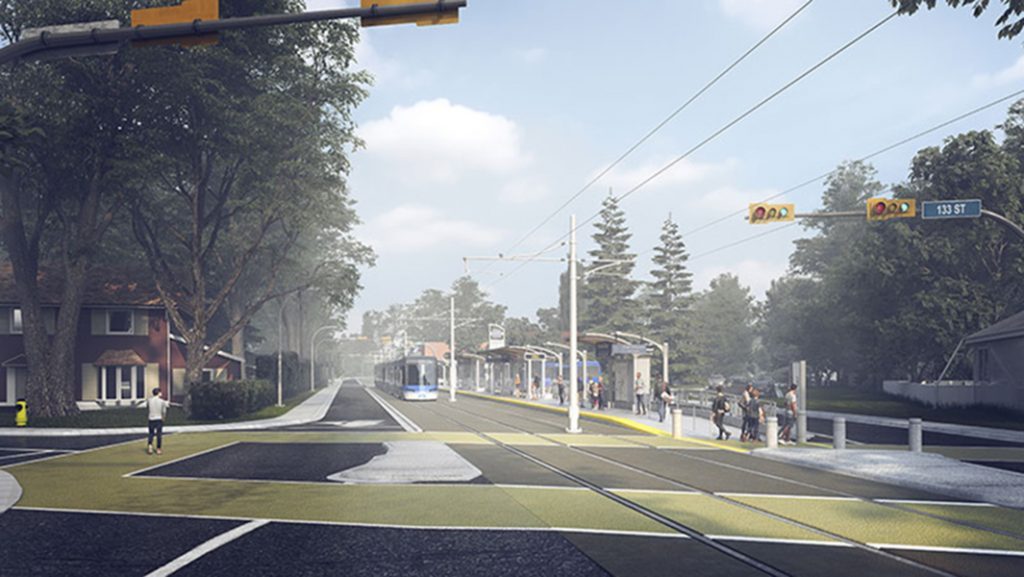The Valley Line is shifting gears.
The city of Edmonton’s Valley Line West is a proposed 14 km light rapid transit line with 14 stops and two elevated stations, along with interfaces to the city’s existing commuter rail system.
The project’s procurement process was scrapped in November after two shortlisted teams withdrew from the project and the City of Edmonton’s Valley Line director Brad Smid was at the Canadian Council of Public Private Partnerships (CCPPP) recent annual conference in Toronto to supply an update on progress.
“We had three teams submit, they all pre-qualified and after we announced our shortlist but before we launched the request for proposals, two of those teams withdrew,” Smid said.
SNC-Lavalin pulled out of a number of projects including the Valley Line due to an expansive restructuring process, he said, and “that one was maybe less related to our specific project.”
The other team to withdraw was Urban Mobility Group, composed of Eurovia, Graham and Parsons.
“They withdrew over concerns about vehicle delivery and systems integration risk, things that generally heavy civil contractors don’t want to manage. They don’t want to price it, they don’t want to take on that risk,” Smid said.
After the two teams withdrew, he said, the City of Edmonton interviewed 24 different contractors through a market sounding process and the key theme that emerged was the risk involved with vehicle supply and integration.
“We’ve reassessed and decided to split the vehicles out and we will procure those separately and allow the design-build contractor to really focus on really building the infrastructure itself,” Smid said.
The city has also decided to hew to a tight timeline, Smid said, which relates back to what was heard during the market sounding process.
“The industry is hot and there’s a lot of projects out there that they can pursue and which are already underway, so contractors are really choosing which projects they want to pursue a lot more carefully and they’re making “go” or “no-go” decisions a lot earlier than they were maybe five years ago,” he said.
“So part of this is to say, we want to get as much information out to you up front so you can make that ‘go’ or ‘no go’ decision,” he added, “and then once we get into procurement it will be quick and snappy and get to financial close as fast as possible to save everyone the time and effort that goes into these pursuits both on the owners side and on the private side.”
Smid stressed the process is not about meeting and arbitrary date but more focused on “optimizing level of effort for all parties and ultimately getting the project going sooner rather than later.”
A new procurement process for the Valley Line will launch in early 2020 with a preferred proponent chosen by fall 2020.
The project remains a public-private partnership but “it depends on how you define P3,” Smid said.
“With design-build-finance, there’s still an element of private financing. It’s short term not long term, but you still have that private finance at risk for performance and you still have a performance-based specification rather than prescriptive one so you’re still leveraging the strengths of the private sector and allocating risk where appropriate,” Smid said.
The line is a direct extension to the Valley Line Southeast line and isn’t physically connected to the larger high-floor light rail network, he added, but “those interfaces are there and they’re manageable, and the key thing is having vehicles and systems that are compatible and interoperable with what’s being built now on Valley Line Southeast, or Stage One.”
“It’s about prescribing the right systems and taking off the shelf equipment that any contractor can buy and implement on their line and then anything that’s on the vehicle itself will be included with the vehicle procurement,” he added.











Recent Comments
comments for this post are closed